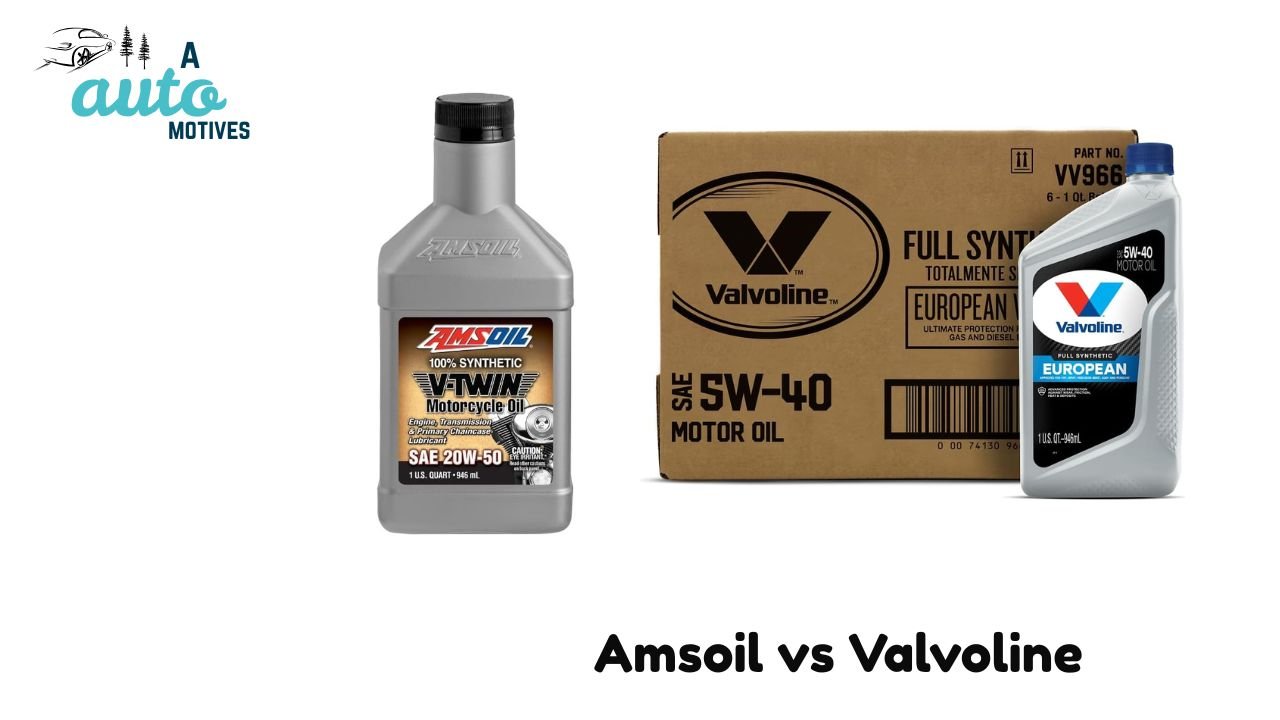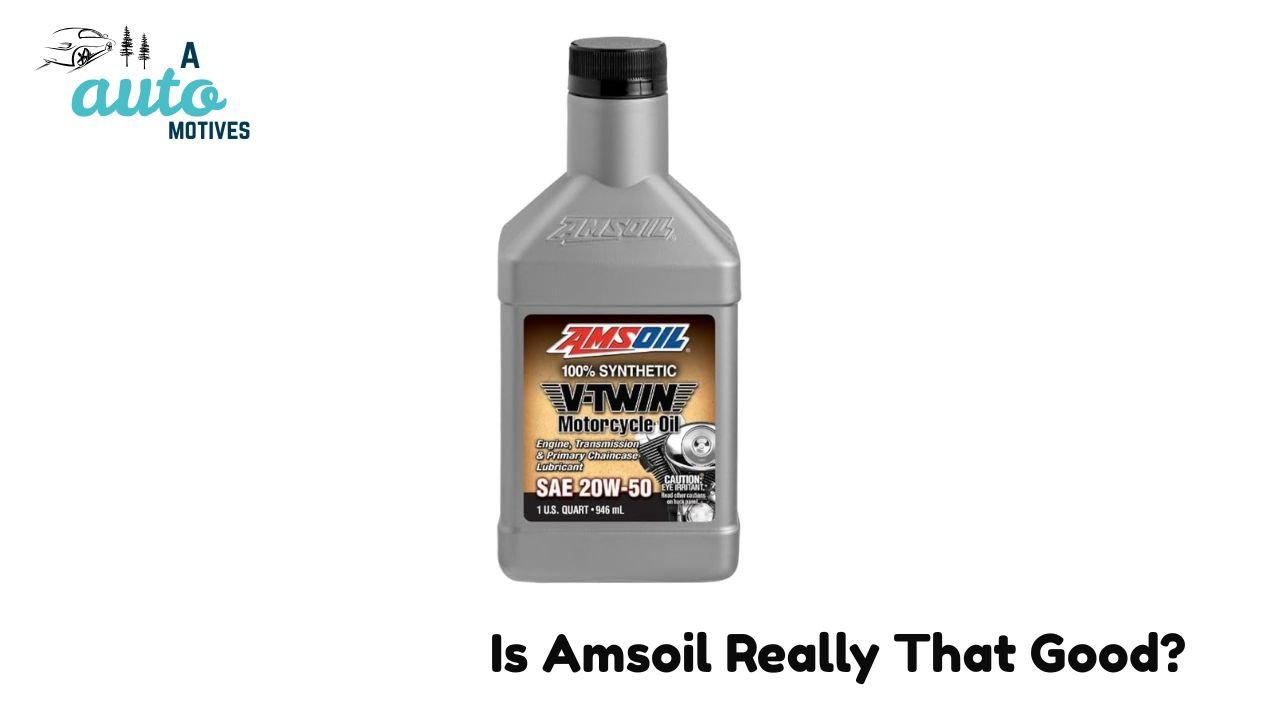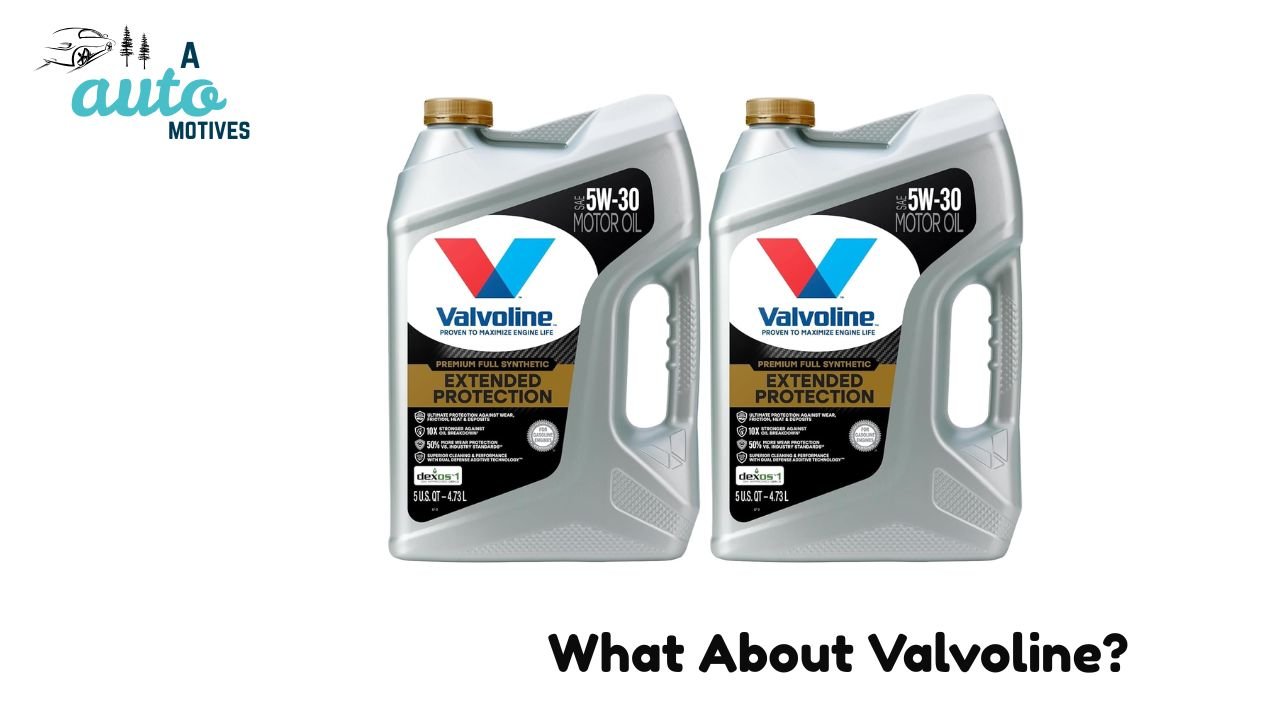Amsoil vs Valvoline: My Honest Experience & Review

Choosing the right motor oil feels a lot like choosing the right pair of shoes. Sure, they all look like they’ll get the job done, but the fit, comfort, and performance tell you whether you’ll love them or regret your choice. Over the past few years, I’ve tested both Amsoil and Valvoline in real driving situations—stop-and-go city traffic, endless highway miles, and weather conditions that tested my patience as much as my engine.
This isn’t a lab test or a brochure comparison. It’s my hands-on, behind-the-wheel experience. If you’re deciding between Amsoil vs Valvoline, my goal is to give you the clear picture I wish I had before spending hundreds of dollars on oil changes and maintenance.
In This Article
Is Amsoil Really That Good?

Let’s start with the one that sparks the most debate. If you’ve ever hung around a group of gearheads, you’ve probably heard glowing reviews of Amsoil. Some treat it like liquid gold, swearing it will make your engine last forever. So, is it hype—or reality?
From my time using Amsoil Signature Series 0W-20 in a turbocharged Honda Accord, I can say it lives up to its premium reputation. Cold mornings in New England weren’t nearly as harsh on the engine, and the startup felt smoother than with cheaper oils. Over long drives, I noticed slightly better fuel efficiency—nothing dramatic, but enough to matter on repeated trips.
The bold 25,000-mile oil change interval that Amsoil advertises? Honestly, I couldn’t bring myself to stretch it that far. I capped mine at around 12,000–15,000 miles. Still, that’s nearly double the mileage I’d get from other oils.
Why Amsoil Stood Out to Me
-
Engine Protection: Even after thousands of miles, my engine ran quieter, with less rattling and vibration.
-
Cold-Weather Reliability: No sluggish starts on frosty mornings—it flowed like it was summer.
-
Fuel Efficiency Boost: Not night and day, but I squeezed a bit more out of each tank.
-
Durability: Oil stayed cleaner longer than anything else I’d tried.
But it wasn’t perfect. The higher price made me think twice each time I restocked, and I had to order online because most local shops didn’t carry it. Also, if your driving is mostly short trips around town, you may not see the full payoff.
My Honest Take on Amsoil
If your car is more than just a way to get from A to B—say you tow, push your engine hard, or live where winters and summers are brutal—Amsoil is worth it. It’s like investing in a premium mattress: not everyone needs it, but once you’ve tried it, it’s hard to go back.
But if you’re the type to change oil every 5,000 miles without fail, even on a daily commuter, you may not see the extra value. It really depends on how much you drive and what you ask of your engine.
What About Valvoline? A Trusted Everyday Option

Now, let’s switch gears to Valvoline. If Amsoil is like the boutique brand with loyal followers, Valvoline is the old reliable name you see on every auto shop shelf. With over 150 years in the game, Valvoline has built its reputation on being dependable, affordable, and widely available.
I first used Valvoline Advanced Full Synthetic in my Ford F-150 during a cross-country trip through Arizona. Temperatures hit triple digits, yet the truck kept its cool. Later, I tried Valvoline High Mileage Blend on an older Honda with 180,000 miles. To my surprise, it cut down on oil consumption and kept the engine cleaner than I expected.
It may not promise the extreme longevity of Amsoil, but Valvoline has something Amsoil doesn’t: convenience. Need an oil change today? Chances are your local quick-lube shop has Valvoline on tap.
Why Valvoline Worked Well for Me
-
Affordability: Cheaper than Amsoil, and you can often find deals at Walmart or auto shops.
-
Accessibility: No need to wait for shipping—you can pick it up anywhere.
-
Engine Compatibility: From hybrids to older high-mileage sedans, Valvoline has an option.
-
Proven Reliability: Even in the heat of Arizona or long interstate drives, it held steady.
On the downside, Valvoline oils typically need changing sooner—around 5,000 to 7,500 miles, depending on the type. And while it’s a solid performer, it doesn’t quite match Amsoil’s resilience under extreme stress or high-performance conditions.
My Honest Take on Valvoline
If I had to describe Valvoline in one word, it would be practical. It’s the brand I’d recommend to my neighbor who drives his Camry to work every day, or to a college student who just wants reliable oil without breaking the bank. It’s not fancy, and it won’t turn your engine into a race car, but it gets the job done—and it’s easy to find when you need it.
For daily commuting, family road trips, or keeping an older car running without draining your wallet, Valvoline is a safe bet.
Head-to-Head: Amsoil vs Valvoline
So, what happens when you put these two side by side? That’s where things get interesting. On paper, they both protect your engine, reduce wear, and keep things running smoothly. But the real differences show up in how long they last, how they handle extreme conditions, and of course, how much they cost.
When I switched between the two, I noticed the contrasts clearly:
-
Cold Weather: Amsoil made freezing mornings less of a hassle, while Valvoline felt a little sluggish until the engine warmed up.
-
Long Highway Trips: Amsoil gave me peace of mind with fewer oil changes needed, but Valvoline held up fine as long as I stuck to shorter intervals.
-
Engine Cleanliness: Amsoil stayed cleaner longer, while Valvoline darkened a bit sooner—but both did the job of protecting against sludge.
-
Cost: Valvoline saved me money upfront. Amsoil potentially saved me money long-term, but only if I pushed the oil to its limits.
Amsoil vs Valvoline: Detailed Comparison
When choosing motor oil, you want more than just general impressions—you want specifics. After testing both in different vehicles and climates, here’s how Amsoil vs Valvoline stack up across the key categories.
Viscosity Performance: Flow Under Pressure
Viscosity is all about how well oil flows in cold and hot conditions. This makes a big difference for cold starts in the winter and long drives in the summer.
-
Amsoil: In freezing temperatures, it flowed effortlessly, making starts smoother and reducing engine strain. On scorching highway trips, it stayed stable without thinning out.
-
Valvoline: It worked well for most conditions, but in extreme cold it took a little longer to warm up. In high heat, it thinned slightly quicker than Amsoil.
Verdict: Amsoil edges out Valvoline if you live in a place with brutal winters or hot summers.
Oil Types and Options
Different cars and driving habits need different oil types.
-
Amsoil: Primarily focuses on full synthetic options. Their line includes oils for cars, trucks, motorcycles, diesels, and even small engines. These oils are designed to last long and provide top-notch protection.
-
Valvoline: Offers full synthetic, synthetic blends, and conventional oils. This flexibility makes it easy for budget-conscious drivers or those with older cars to find a match.
Verdict: Amsoil is best if you want premium synthetic performance. Valvoline wins if you want variety and affordability.
Additive Quality: Keeping Engines Clean
The additives in oil help fight sludge, reduce wear, and keep the engine running smoothly.
-
Amsoil: Packs in strong detergents, anti-wear agents, and friction modifiers. This combination not only kept my engines clean but also helped improve fuel efficiency a little.
-
Valvoline: Its detergents are solid but needed more frequent oil changes to keep the engine spotless. Anti-wear protection was good, but not as long-lasting under heavy stress.
Verdict: Amsoil provides stronger, longer-lasting protection.
Engine Protection and Longevity
Here’s where the real test lies—how long does each oil keep your engine safe?
-
Amsoil: My engines ran quieter and smoother for thousands of miles. Even after 12,000+ miles, the oil still looked healthy, and there was no noticeable sludge.
-
Valvoline: Protected well during daily commutes and road trips but needed changing more often. Around the 5,000–7,000-mile mark, it started to lose some of its smoothness.
Verdict: Amsoil wins for long-term, heavy-use protection. Valvoline does well for regular intervals and daily driving.
Fuel Efficiency: Does It Make a Difference?
Oil won’t double your MPG, but it can help your engine run more efficiently.
-
Amsoil: With reduced friction and strong additives, I noticed a small but measurable bump in mileage during long trips.
-
Valvoline: Worked fine, but I didn’t notice any real gains in fuel economy compared to other standard oils.
Verdict: Amsoil has the edge for squeezing out extra efficiency, though it’s modest.
Extreme Temperature Performance
For drivers in the U.S., climate plays a big role in oil choice.
-
Amsoil: Handled both freezing New England winters and blazing Arizona summers without breaking a sweat. Cold starts were smooth, and hot weather didn’t cause breakdown.
-
Valvoline: Did well in most conditions but showed minor struggles in extreme heat, where it thinned faster than Amsoil.
Verdict: Amsoil is the clear winner if you live in areas with weather extremes.
Oil Change Intervals: How Long Can You Go?
Let’s be honest—no one loves oil changes. This is where Amsoil markets itself heavily.
-
Amsoil: Claims up to 25,000 miles. Personally, I was comfortable around 12,000–15,000, and the oil still looked solid.
-
Valvoline: Recommended every 5,000–7,500 miles for best results. This meant more frequent shop visits, but it’s also cheaper per quart.
Verdict: Amsoil wins for fewer oil changes, but Valvoline balances it out with lower cost and availability.
Final Recommendation: Which Should You Choose?
Choosing between Amsoil vs Valvoline comes down to your driving style, budget, and where you live.
Choose Amsoil if you:
-
Want fewer oil changes and longer protection.
-
Drive in extreme heat or freezing cold.
-
Own a high-mileage, turbocharged, or performance-oriented vehicle.
-
See oil as an investment in long-term engine health.
Choose Valvoline if you:
-
Need an affordable, widely available oil.
-
Drive a regular commuter car or family SUV.
-
Stick to routine oil changes every 5,000–7,500 miles.
-
Want a reliable option without overthinking it.
My Verdict:
For performance, protection, and long intervals, Amsoil is the winner. But for everyday practicality, budget-friendly pricing, and accessibility, Valvoline makes a lot of sense. It’s less about which oil is “better” and more about which one fits your life.
FAQs: Amsoil vs Valvoline
1. Which oil is better overall—Amsoil or Valvoline?
It depends. Amsoil is best for long-lasting, premium protection, while Valvoline shines in affordability and everyday use.
2. Is Amsoil worth the extra cost?
If you drive a lot, push your car hard, or want longer oil change intervals, yes. For casual drivers, the benefit may be less noticeable.
3. Does Valvoline perform well in cold weather?
Yes, especially the full synthetic options. But Amsoil flows better in extreme cold.
4. Which oil is best for older engines?
Both brands have strong high-mileage options. Amsoil offers premium blends, while Valvoline’s MaxLife is a trusted and affordable choice.
5. How often should I change oil with Amsoil vs Valvoline?
Amsoil can go up to 25,000 miles, though I recommend 12,000–15,000 for peace of mind. Valvoline should be changed around 5,000–7,500 miles, depending on the oil type.
Closing Thoughts
When it comes to Amsoil vs Valvoline, I think of it like this: Amsoil is for the car enthusiast who treats their engine like family, while Valvoline is for the everyday driver who values convenience and cost. Both deliver on their promises, just in different ways.
At the end of the day, the best oil isn’t about the brand—it’s about matching the oil to your driving habits, climate, and budget. Choose wisely, and your engine will thank you with years of reliable performance.






